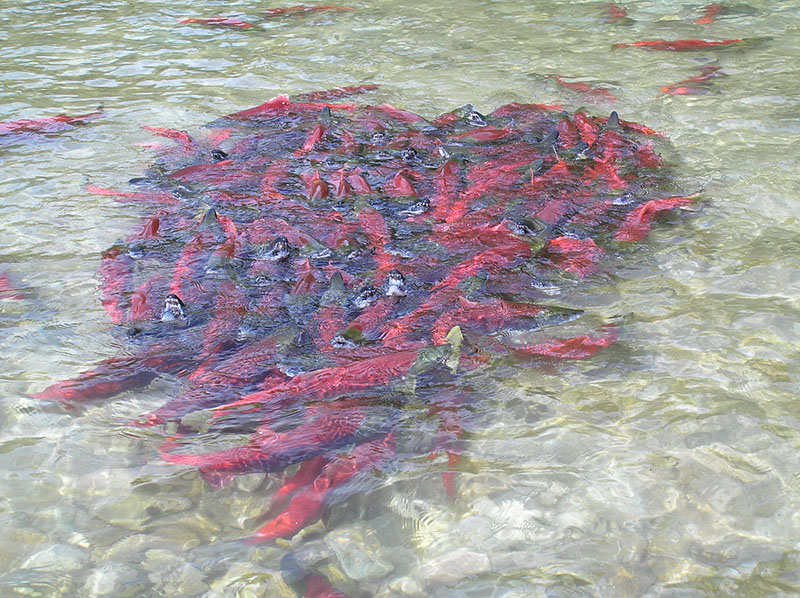On Thursday, May 6, the Biden administration submitted a preliminary report on a national conservation initiative, widely known as 30x30, to the National Climate Task Force.
The 24-page document, “Conserving and Restoring America the Beautiful,” sets the stage for the conservation of “at least 30 percent of our lands and waters by 2030,” which was initiated by the president’s Jan. 27 executive order, “Tackling the Climate Crisis at Home and Abroad.”
Since that EO was issued, the departments of Interior, Agriculture and Commerce, and the Council on Environmental Quality have collected stakeholder input to shape this report, which clearly attempts to expand the definition and application of the term “conservation” to include working lands and waters that may be used sustainably while still being allocated to the program’s 30 percent goal.
“Notably,” the report says, “the president’s challenge specifically emphasizes the notion of ‘conservation’ of the nation’s natural resources (rather than the related but different concept of ‘protection’ or ‘preservation’) recognizing that many uses of our lands and waters, including of working lands, can be consistent with the long-term health and sustainability of natural systems.”
Further, the report says, private and Tribal territories may qualify as part of the initiative.
“The 30 percent goal also reflects the need to support conservation and restoration efforts across all lands and waters, not solely on public lands, including by incentivizing voluntary stewardship efforts on private lands and by supporting the efforts and visions of states and Tribal Nations.”
The bulk of the report is devoted to establishing the program’s purpose and practices to be used in achieving the goal, culminating in four pages of recommendations. The section on wild fish and habitats acknowledges that “the United States boasts one of the most dynamic and innovative wild-capture fishery management systems in the world.”
It also advises NOAA — which represented the Commerce Department in the stakeholder listening sessions to prepare this report — to “work closely with regional fishery management councils to identify areas or networks of areas where their fisheries management efforts would support long-term conservation goals.”
Participation of management councils in advising NOAA’s instructions to “expand the National Marine Sanctuaries System and National Estuarine Research Reserve System” may be a nod to commercial fisheries stakeholders in the Northeast as well as New England Fishery Management Council members, who have noted that the only marine monument in the Atlantic was well-managed by the council as fishery habitat before it was set aside under the Obama administration as the Northeast Canyons and Seamounts Marine National Monument.
Several industry associations expressed support for the initiative.
“Today, the Biden administration has committed to maintaining and extending the collaborative, stakeholder-driven and science-based approaches to ocean conservation that have been such a bipartisan success story,” said Matt Tinning, director of Sustainability & Public Affairs for the Seattle-based At-sea Processors Association. “The administration’s report states that nature is essential to the health, well-being, and prosperity of every family and every community in America. That is absolutely true for countless fishing communities across the United States, whose futures are inextricably linked to the resilience of the ocean ecosystems that sustain healthy marine fisheries.”
Many stakeholders in Alaska’s Bristol Bay have hoped for permanent protections for the region to push out the threat of heavy metals mining. And in Southeast Alaska, recent proposals to change the logging rules for 9.3 million acres of salmon habitat in the Tongass National Forest have pushed locals for a designation change.
“If we want to make 30x30 real and have it resonate with the public, we should protect places that the public cares about. Bristol Bay and the Tongass National Forest are two such places. The jobs, the fish and wildlife and the cultural riches they sustain should make them top of the list, immediate priority areas for the Administration,” said SalmonState Executive Director Tim Bristol.
Overall, industry leaders seem to be relieved by the language in the report and eager to work toward conservation goals that will support sustainability for commercial fisheries.
“We share President Biden’s conservation vision, which recognizes that many uses of our lands and waters can be consistent with the long-term health and sustainability of natural systems,” said Leigh Habegger, executive director of the Seafood Harvesters of America, based in Washington, D.C. “America’s seafood harvesters welcome the opportunity… to ensure our oceans are healthy and productive, even in the face of climate change.”







